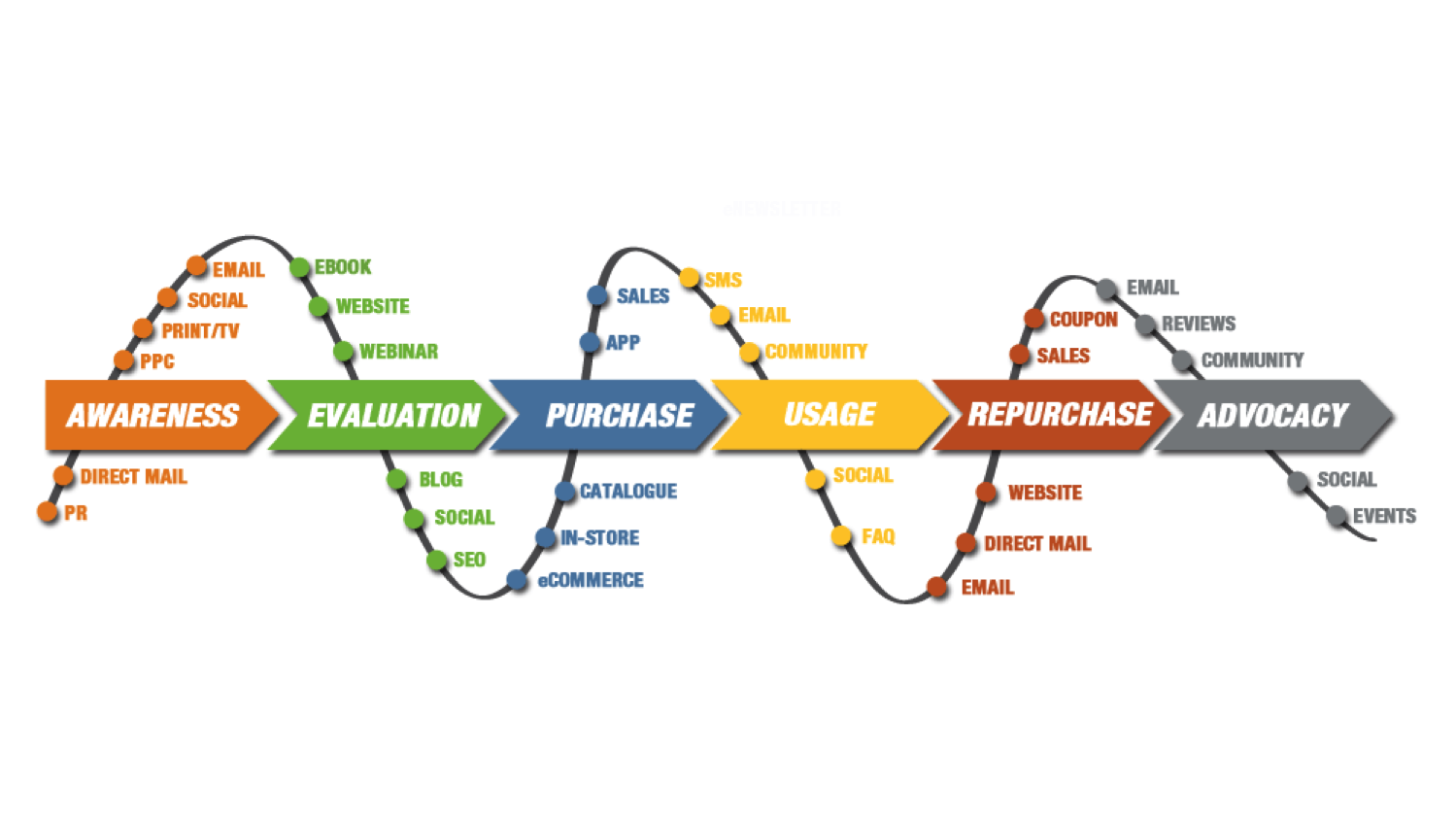
Get your FREE 30-day trial.
Please complete all fields.
On Wednesday morning of Connections 2014, we heard from Kyle Lacy, Director of Global Content Marketing & Research at the ExactTarget Marketing Cloud, in one of our breakout sessions.
Kyle shared on key technology trends that are transforming how customers communicate and how brands should be interacting with them. Below are Kyle's 7 Technology Trends and some recommendations for how brands can use these trends to enhance their customer journeys.
1. Moments Matter
Take advantage of every experience the customer has with your brand no matter what the interaction is and what device it's happening on.

Moments really do matter when technology allows us to reach our customers at any stage along the customer journey. Use the map above to think about your own stage in the customer journey and how to optimize those moments and the experience your customers have with your brand.
2. Connected Consumer
Mobility is the largest trend we've seen in all the recent trends we've uncovered-and this is just the beginning. Smartphones still have a massive growth potential with only 30% of the total market using smartphones.
"The connected consumer is constant," Kyle noted. "As the global consumer becomes more connected, we don't care what device they're using. I only care that they are connected."
Kyle shared that 42% of US consumers purchased a product on their mobile phone in 2013 and 83% of US consumers research products while in-store on their mobile phone.
3. The Ecommerce/Amazon Effect
Amazon is still revolutionizing ecommerce and retail. From things like Amazon Prime Air (see video below) and enhancing product recommendations and personalization, Amazon continues to be on the cutting edge of technology.
And it's not just Amazon. Ecommerce is continuing to be transformed from giants like Alibaba to startups like Partpic.
4. Brand Personalization
Personalization is everything. The ExactTarget Marketing Cloud's recent Predictive Intelligence Benchmark Report found there is a 12-25% increase in sales if the transactional message includes personalized product recommendations.
5. Collaborative Economy
The collaborative is defined as, "An economic model where creation, ownership, and access are shared between people and corporations." Brands like Airbnb, Uber, Lyft, TaskRabbit, LendingClub, and many others have introduced a whole new economic model that has major implications for how consumers are interacting with each other.
The collaborative economy is a collaboration between products, ideas, and people and is just another step in the social revolution.
6. Social Intelligence
Social media has grown a lot over the past few years. We have gone from a handful of use cases and strategies to a new concept of social intelligence based on numerous key aspects of social media ranging from tactical to strategic value.
The main issue now, though, is that organizations don't know how to build out groups to manage "digital." When empowering the new collaborative company, it's about embedding social media cross the fabric of the organization. You have to ask yourself, "How do we make one department's outputs another department's inputs?" This is where the true value and efficiency comes with social media.
7. Humanizing Automation
Kyle finished his seven trends with "humanizing automation." Automating the customer journey is a vital goal for most marketers. The challenge comes when you try to keep the human element to the customer journey while still maximizing efficiencies using automation. To do this, you need to be sure you're making data-based decision.
The key is that data equals relevance and experience equals relevance. With trends, data is where you start and experience is where you end. {Tweet This}
David Walmsley, Head of Multichannel at Marks & Spencer, says, "We must move from numbers keeping score to numbers that drive better actions."
You can view Kyle's full presentation below and you can see all the Connections 2014 breakout session presentations here.
#CNX14 - 7 Technology Trends Transforming Customer Communication from ExactTarget